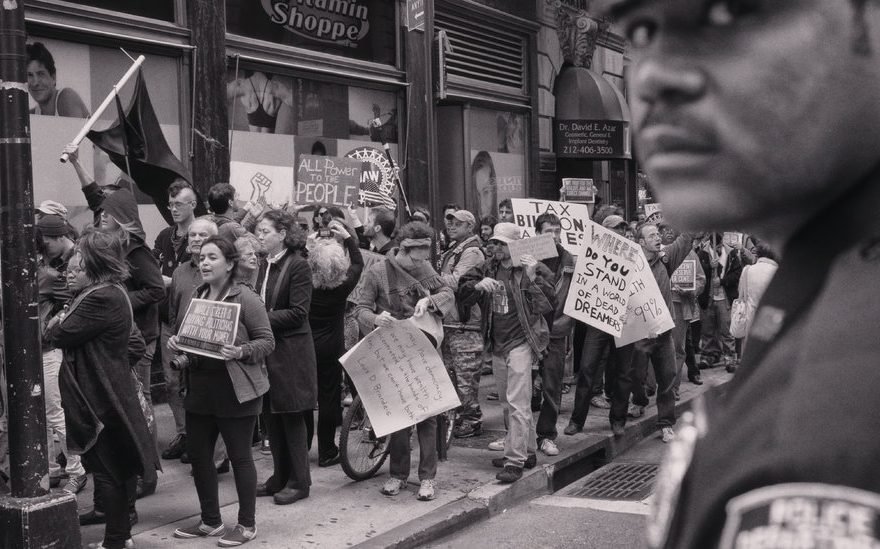New Yorkers are a feisty bunch. They see something they do not like and are not afraid to voice their opinions. Loudly. Repeatedly. It is no wonder that so many social justice movements got their start in the city.
And that is precisely what the permanent installation, “Activist New York,” at the Museum of the City of New York, has chronicled: 350 years of social activism in New York City, including, among other movements, immigration, civil rights, the Young Lords, the Movement for Black Lives, women’s rights and transactivism.
“We don’t give one narrow definition of the word ‘activism,’” said Sarah J. Seidman, the Puffin Foundation Curator of Social Activism at the museum.
“Activist New York” examines the ways in which New Yorkers have exercised their power to shape the future of the city — and the nation.
“The show doesn’t perceive of activism on one side of the ideological spectrum,” Ms. Seidman said. “I wanted to get at tactics and methods of protest in addition to ideology. We took an intersectional approach.”
A range of political ideologies are illustrated through a series of installations beginning with the Dutch colonial period and ending with the Movement for Black Lives. And while individual movements rotate in and out, it can be challenging to determine what should be added or replaced, Ms. Seidman said.
“We are always adding material to keep the show fresh and are considering additional historical content on housing, immigration and incarceration, as well as new voices from current activist organizations and movements,” she said. “I’d like to have more of an indigenous presence.”
City dwellers are encouraged to use the #ActivistNY hashtag on social media to chronicle their own actions. A gallery wall features their stories. “That’s why we have a limited number of sections,” Ms. Seidman said. “The number of possibilities are endless.”
Still, there is no specific installation dedicated to Occupy Wall Street or explicitly targeting the #MeToo movement.
“There are logistical challenges to putting objects in the gallery right as people are mobilizing,” she said. “Both of these topics have found their way into the exhibition in different ways, but we’ve wanted to see how these events unfold and evaluate their significance as movements so that we can present meaningful historical analysis through objects.”
For Occupy Wall Street, the museum has several photographs of the protests in Zuccotti Park in New York City. And the curators had #MeToo in mind for the suffrage centennial of 2020 when they put in a section on the women’s liberation movement of the 1970s.
Most significant is how relevant these issues are today and how similar concerns still remain unresolved. “The history of activism feels so relevant today,” she said. “Immigration, the women’s movement, racism — we’re still grappling with these things.”
It is not surprising that the exhibit is the most popular field trip offering for New York City students from grades two to 12, according to the museum. The Museum, at Fifth Avenue and 103rd Street, also hosts an annual free conference for educators, children and scholars that includes speakers and workshops focusing on how to engage students in social change.
The exhibit begins with the struggle for religious tolerance in New Netherland from 1650 to 1664. Included are images from the Flushing Remonstrance, written in 1657 by a group of Protestant colonists who did not want to force Quakers out of the city.
It then jumps to the early to mid-1800s. From 1820 to 1860, 5,400,000 immigrants arrived in the United States. Of these, 3,700,000 came through New York, but they were not welcome by nativists, who tried to curtail the largely Catholic immigrant community’s access to citizenship, the vote and public office.
From 1870 to 1930, New Yorkers debated nudity, prostitution and contraception, as well as abortion. At the same time, people were fighting for better working conditions, inspired by the 1909 strike by workers affiliated with the International Ladies’ Garment Workers’ Union, and the 1911 fire at the Triangle shirtwaist factory, in which 146 people, mostly women, were killed.
The “no nukes” section explores the antiwar and environmental groups that converged in New York during the Cold War. New York was not only a base for nuclear disarmament groups but also the site of a major protest on Central Park’s Great Lawn on June 12, 1982, that drew one million demonstrators.
Newer exhibits include a section on Vietnam War protests, examining the city’s role in mobilizing against the war from 1965 to 1975; the Movement for Black Lives from 2012 to 2017; and 50 years of transgender activism.
Source: Read Full Article
